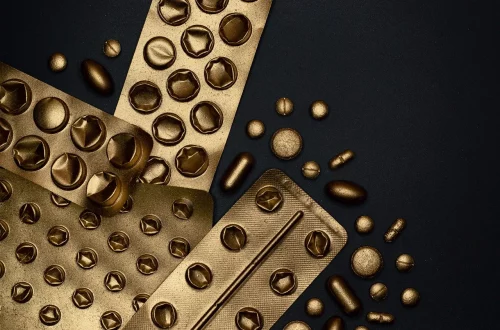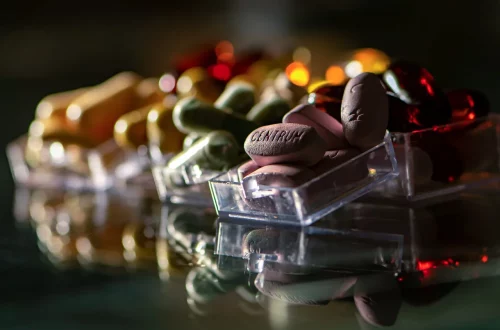
Warning Signs to Watch for After Neutering Your Dog
Neutering is a common procedure for pet owners who want to manage their dog’s reproductive health and behavior. This surgical intervention not only helps prevent unwanted litters but can also reduce certain health risks and behavioral issues. However, it’s essential to understand that the days and weeks following the surgery are crucial for your dog’s recovery. During this time, you may notice various changes in your pet’s behavior and physical state. While many of these changes are normal, some could indicate potential complications that require immediate attention.
For any pet owner, being aware of the signs to look for after neutering can make all the difference in ensuring your dog’s well-being. Recovery can vary widely from one dog to another based on factors like age, breed, and overall health. Understanding what is typical and what is not can help you ensure that your furry friend receives the care they need during this critical period. Observing your pet closely can help you identify any warning signs that could indicate complications, allowing for timely intervention if necessary.
As you navigate through this post-surgery phase, it’s essential to remain vigilant and informed about your dog’s recovery process. By doing so, you can help ensure a smooth transition for your pet as they heal and adjust to their new state. Here are some warning signs to watch for after neutering that every dog owner should be aware of.
Excessive Swelling or Discharge
After neutering, it’s normal for your dog to exhibit some swelling around the surgical site. However, if you notice that the swelling is excessive or persists longer than a few days, it may be a cause for concern. An abnormal increase in swelling can indicate an infection or other complications that may require veterinary intervention.
In addition to swelling, pay attention to any discharge coming from the incision site. A small amount of clear or slightly colored discharge can be normal during the healing process, but if the discharge becomes yellow, green, or foul-smelling, it’s imperative to contact your veterinarian. These symptoms could indicate an infection necessitating treatment, such as antibiotics or further surgical intervention.
It’s also important to monitor the surgical site for any signs of opening. If the incision appears to be gaping or if you notice any separation of the skin, you should seek veterinary care immediately. Proper wound care is crucial for minimizing the risk of complications, so following your veterinarian’s post-operative instructions is essential.
To help prevent complications related to swelling and infection, ensure that your dog does not lick or chew at the surgical site. Using an Elizabethan collar or other protective gear can help keep your pet from disturbing the area, allowing it to heal properly.
Regularly checking the surgical site for any changes can help you stay ahead of potential issues. If you have any concerns or notice anything unusual, don’t hesitate to reach out to your veterinarian for guidance.
Behavioral Changes
Post-operative behavioral changes are common in dogs, especially during the recovery period after neutering. While some changes may simply be a response to the anesthesia or pain medications used during the procedure, others may require further examination.
Many dogs may appear lethargic or less active immediately after surgery, which is typical as they recover from the anesthetic effects. However, if your dog remains unusually quiet, disinterested in activities they typically enjoy, or shows a drastic change in their eating or drinking habits, it may signal a problem.
In some cases, dogs may experience anxiety or restlessness after surgery, which can manifest as whining, pacing, or an inability to settle down. This behavior may be due to discomfort or stress from the procedure. Providing a calm and comfortable environment can help ease their anxiety.
Additionally, some dogs may become more aggressive or irritable post-surgery, which can be attributed to pain or discomfort. If your dog exhibits drastic changes in temperament, it is crucial to consult your veterinarian to rule out any underlying medical issues.
Monitoring behavioral changes can provide valuable insights into your dog’s recovery process. If you notice anything concerning or if the behavioral changes persist beyond a few days, it is essential to seek veterinary advice. Early intervention can help address complications before they escalate, ensuring a smoother recovery for your furry friend.
Lack of Appetite or Vomiting
A decreased appetite is not uncommon in dogs after surgery. However, if your dog refuses to eat for more than 24 hours or shows signs of vomiting, it warrants attention. Some dogs experience nausea as a side effect of anesthesia or pain medications, but persistent vomiting can lead to dehydration and other complications.
If your dog is hesitant to eat but shows interest in treats or favorite foods, you may try offering small amounts of bland food, such as boiled chicken and rice, to see if they respond better. However, if vomiting continues or if your dog exhibits other concerning symptoms, such as diarrhea, it is essential to consult your veterinarian as soon as possible.
In addition to appetite changes, watch for signs of dehydration, which can include dry gums, excessive panting, and lethargy. Ensuring your dog has access to fresh, clean water is crucial during recovery. If you suspect your dog is dehydrated, contact your veterinarian immediately for advice on how to proceed.
Overall, while a temporary decrease in appetite can be normal, any significant or prolonged changes should be taken seriously. Staying in tune with your dog’s eating habits can help you identify potential issues early, allowing for timely veterinary intervention if needed.
Difficulty Moving or Limping
Post-surgery, it’s important to monitor your dog’s mobility closely. Some stiffness or reluctance to move is expected as they recover from anesthesia and surgery. However, if your dog shows significant difficulty moving, limping, or appears to be in pain when walking, these could be signs of a problem.
Pain management is a critical aspect of post-operative care, and your veterinarian may have prescribed pain medications to help ease your dog’s discomfort. If you notice that your dog seems to be in pain despite receiving medication, or if they are vocalizing when moving, it’s essential to consult your veterinarian for further evaluation.
Additionally, pay attention to how your dog uses their hind legs. If they are unable to bear weight on one or both legs or if they exhibit an unusual gait, it may indicate complications related to the surgery or injury.
Encouraging gentle movement during recovery is important, but be cautious not to overexert your dog. Short, controlled walks can help promote healing and maintain mobility without putting undue stress on their body.
If your dog’s mobility does not improve within a few days, or if you notice any concerning symptoms, don’t hesitate to reach out to your veterinarian. Prompt attention can help ensure that any issues are addressed before they lead to more significant complications.
In summary, being vigilant after your dog has been neutered is crucial for ensuring their recovery goes smoothly. By keeping an eye out for warning signs such as excessive swelling, behavioral changes, lack of appetite, and mobility issues, you can help your furry friend heal comfortably and safely.
**Disclaimer:** This article is intended for informational purposes only and should not be considered medical advice. For any health concerns regarding your pet, please consult your veterinarian.




